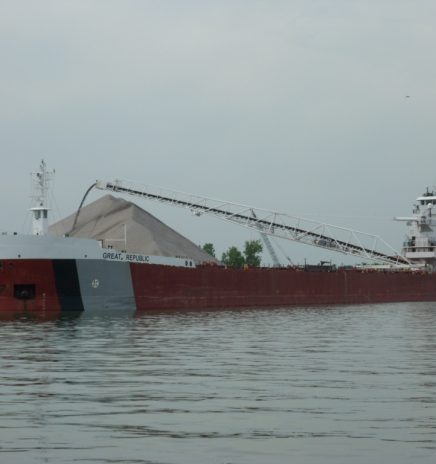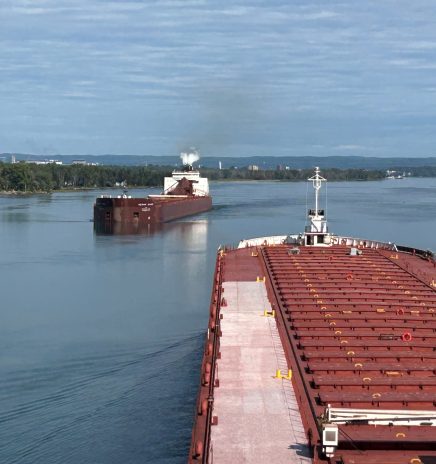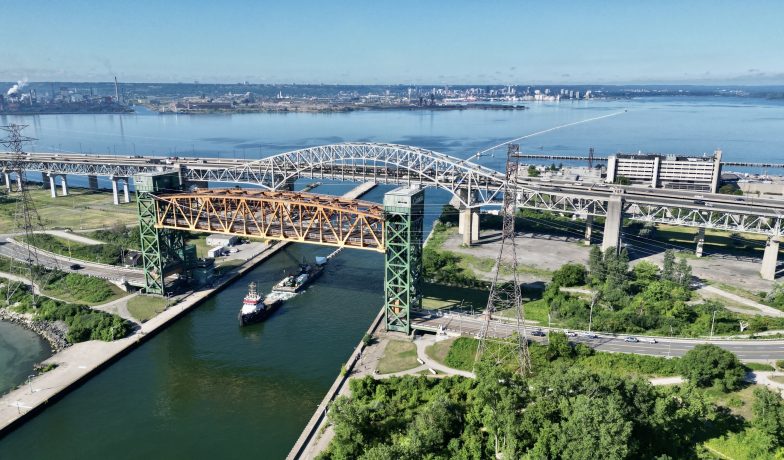More Than 36 Million Metric Tons Transited System in 2022
General cargo saw the steepest decline at 21.5 percent. Iron ore decreased 9.6 percent, while coal cargo fell 6.9 percent. Grain shipments were also down due to the 2021 drought that affected western Canadian farmers.
Overall, dry bulk was the leading commodity of the season, with 11.70 million metric tons, a 2.84 percent increase over 2021. Liquid bulk, including refined petroleum products, increased 9.85 percent over last year, with 3.55 million metric tons. General cargo shipments, which rose 72.98 percent in 2021, fell off 21.52 percent this past season. Iron ore, coal and grain shipments were also down in 2022.
“Seaway traffic results show positive trends amongst certain commodities, which demonstrates our system’s ability to quickly adapt to changes in the market,” said Terence Bowles, president and CEO of the SLSMC. “It’s this agility that enables the Seaway to respond to changes and act on emerging opportunities, such as shifting trade patterns resulting from global events. In addition, we are working closely with partners to develop lands along the Seaway, which will benefit both the economy and local communities.”
Adam Tindall-Schlicht, administrator of the GLS, said the Great Lakes can handle upheavals in the global supply chain thanks to decades of investment and reliability. “The Seaway System is a leading example of a worldwide economically resilient and environmentally sustainable shipping corridor, and optimism is high for expansion of trade on the Great Lakes in 2023,” he said.
The last commercial transit of the 2022 navigation season through the Montreal-Lake Ontario (MLO) section of the Seaway occurred on January 1. Commercial traffic ceased on January 9 at the Welland Canal and January 15 at the Soo Locks.
Highlights from the Season
Despite the decrease in some cargoes in 2022, the navigation season did experience several highlights:
- U.S. and Canadian producers helped mitigate global issues affecting fertilizer supplies, which drove significant growth in potash, up over 100 percent compared to 2021.
- Dry bulk commodities, including coke, salt and potash, contributed over 11 million metric tons of the 2022 total.
- Petroleum products were up nearly 28 percent over last year, due to increased passenger travel.
- U.S. grain exports increased, and although month-over-month Canadian grain performed well, it did not match last year’s results. The effects of the 2021 drought in the Canadian prairies impacted export movements at the beginning of the 2022 season. That said, the improved 2022 grain harvest is expected to result in a strong start for 2023.
- An increase of vessel transits, including expanded cruise ship activity in the Great Lakes helped contribute to tourism and economic development in Canada and the United States.
Planning for the Future
While there is some uncertainty about economic growth in 2023, the SLSMC and GLS plan to work on key initiatives to further support expanding trade on the Great Lakes. These include facilitating the establishment of green shipping corridors, expanding land development along SLSMC-owned canals and developing innovative technologies, such as the Vessel Information System.

Limestone and Iron Ore Trade Down on the Great Lakes in November
The Lake Carriers’ Association reports that shipments of limestone on the Great Lakes totaled 2.4 million tons in November, a decrease of 18.1% compared to 2024. Limestone cargos were also... Read More

Great Lakes Iron Ore and Limestone Trade Down in October
The Lake Carriers’ Association reports shipments of iron ore on the Great Lakes totaled 4.4 million tons in October, a decrease of 1.3% compared to 2024. Shipments were 8% below... Read More



